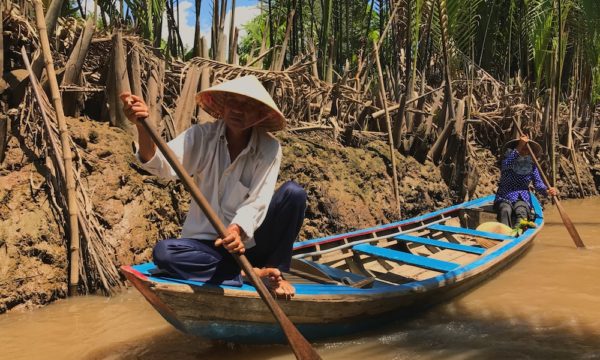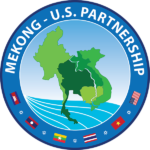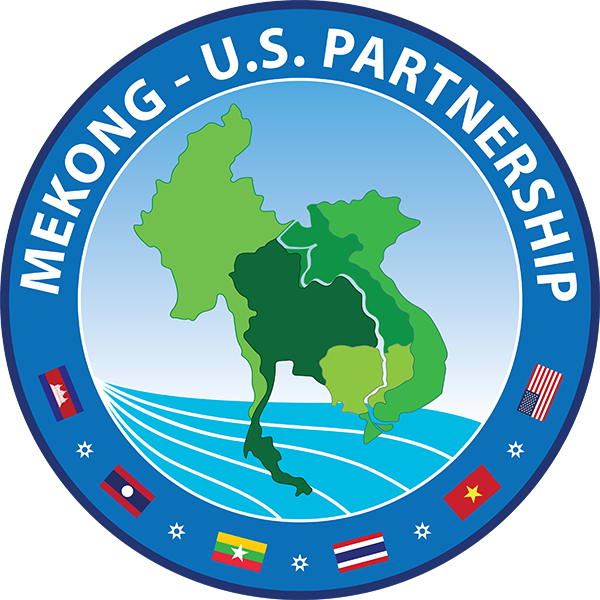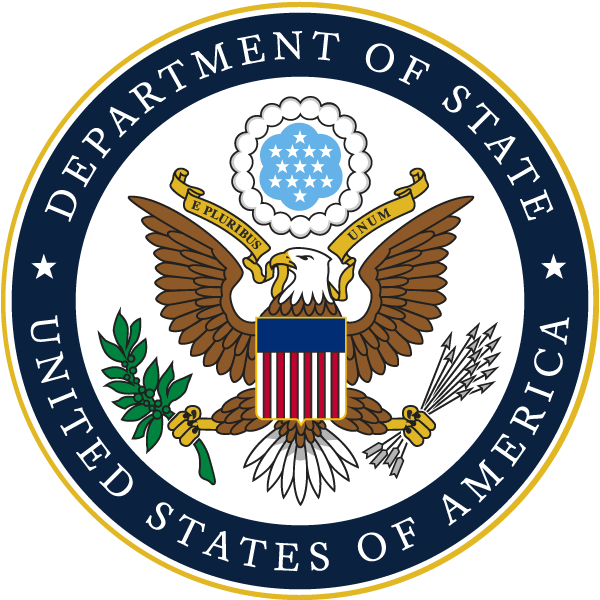
The Mekong-U.S. Partnership promotes the stability, peace, prosperity, and sustainable development of the Mekong sub-region through cooperation among the Mekong partner countries and the United States. It further reinforces the strong and longstanding relationship among the United States, Cambodia, Lao PDR, Myanmar, Thailand, and Viet Nam. The Partnership builds upon 11 years of cooperation and progress through the Lower Mekong Initiative (LMI) to expand collaboration in the face of new challenges and opportunities. The Partnership supports the implementation of the ASEAN Community Vision and is an integral part of support and cooperation between the United States and ASEAN.
The Partnership has improved the lives of hundreds of thousands of people in the Mekong region and has been instrumental in providing poverty-reducing training and education to develop regional human capital resources. The United States has established itself as a committed partner in addressing trans-boundary challenges faced by the Mekong region and has spurred improved governance, enhanced natural resources management capacity, promoted sustainable infrastructure, strengthened health security, expanded energy security, supported higher quality education, and encouraged women’s entrepreneurship. We have expanded the scope of cooperation under the Partnership to include transboundary water and natural resources management, non-traditional security, and energy and other infrastructure as part of our economic connectivity cooperation.
The Mekong-U.S. Partnership has improved the lives of hundreds of thousands of people in the Mekong region, and has been instrumental in providing poverty-reducing training and education to develop human capital resources.
The main goals of the Mekong-U.S. Partnership are:
- To improve transparency, good governance, connectivity, and sustainable development in the region through implementing regional capacity-building activities, fostering regional policy dialogues, and exchanging expertise and best practices.
- To strengthen regional connectivity by building connections among institutions, the public and private sectors, and people within the Mekong Region and with the United States.
- To work with the countries of the Mekong region and international partners to identify and implement solutions for key regional challenges.
The broad range of U.S programming reorganized in 2020 with the launch of the Mekong-U.S. Partnership:
- Mekong-U.S. Partnership (2020- ): The Mekong-U.S. Partnership builds on the success of the Lower Mekong Initiative (LMI) by flexibly expanding cooperation and programming to address emerging challenges, including economic connectivity, human capital development, transboundary water and natural resources management, and non-traditional security, including collaboration on emerging threats such as health security, pandemic response, countering transnational crime, cyber security, and countering trafficking in people, drugs, and wildlife. The Mekong-U.S. Partnership is guided by principles that are aligned with those enshrined in the ASEAN Outlook on the Indo-Pacific and the U.S. Indo-Pacific vision, including, equality, sustainable development, economic growth, and effective, consensus-based, and results-orientated management systems. The Partnership also seeks to promote complementarity with ACMECS, ASEAN, and other Mekong development partners and cooperation mechanisms in line with these principles.
Since 2009, the United States has worked with the five Mekong countries counterparts to improve transparency, good governance, connectivity, and
sustainable development in the region.
Our programs have helped Mekong countries better address transboundary challenges including water and food security, human resource capacity, energy and infrastructure planning, and STEM education.

 Mekong - U.S. Partnership
Mekong - U.S. Partnership


